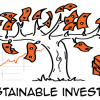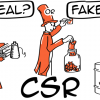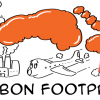Script
Climate Change: Script
Is climate change really human made?” There has been a lot of research and reports about climate change over the years and I don’t blame you if you don’t want to read them all so here is in 3 minutes what we know for sure… Let’s get drawing!
It all started in 1998, when an ice-drilling project was undertaken in the Russian Vostok station in Antarctica. The project yielded the deepest ice-core ever recovered giving access to ice that was 420,000 year-old at a depth of 3,623 meters. It supplied data about atmospheric composition and climate through four climate cycles.
So here is how it all works: The formation of the glaciers results from the transformation of water into ice. During this process, which can last thousands of years, sediments, air and rocks are stuck into the ice making millions of layers one above the other in chronological order. Over the time the glacier becomes a million page history book with the last chapter on the top. The deeper you drill, the older the compounds are.
The ice core gave access to climate data including local temperature, precipitation rate, wind strength, etc. But also, and this is what we are interested in here, the ice core provided direct records of past changes in atmospheric trace-gas composition thanks to their entrapped air inclusions. Then it was possible to determine the levels of carbon dioxide (CO2) and methane (CH4) at a given time. So here is what global temperature and atmospheric concentrations of carbon dioxide and methane look like over four climate cycles (420,000 years):
You can clearly see the 4 climate cycles and you also see that they have very similar spikes and patterns. There is clearly a relationship between temperature, carbon dioxide and methane. The upper and lower boundaries of these three variables are tightly constrained which is typical of a self-regulating system. Our body is also a self-regulating system and does something similar in a way: when you exercise your body sweats as a way to regulate its temperature. Well, on Earth, when concentrations of carbon dioxide and methane go up, global atmospheric temperature goes up too.
Now here is what happened with the concentration of atmospheric CO2 since 1960: it increased by about 70 parts per million that is more than 1 ppm each year indicating significant human perturbation in the self-regulating system of Earth since the beginning of the Industrial Revolution.
As this concentration is now way over the upper boundary noted during the last 420,000 years and as the Earth seems to be a self-regulating system, well, we can expect the global temperature to increase as well, and we are already seeing this worldwide.
Since the Vostok research was published, more recent ice cores were performed by the European Project for Ice Coring in Antarctica (the EPICA): theyprovided data for the last 800,000 years and confirmed the findings in Vostok.
So, as the Intergovernmental Panel on Climate Change simply puts it in their 2013 report: “Human influence on the climate system is clear” and we can safely say that we, human beings, are responsible for climate change.







We LOVE the Sustainability Illustrated videos but can’t use them in our Open Educational Resource (OER) Sustainability digital text because the captioning is not in sync with the audio/speaking, and is not 99% accurate. 🙁 Can you fix this?
Hi Jean,
Thank you for your message. I know I have noticed this issue in the past. Some videos got their subtitles off by about 3 seconds and some other did not. I suspect it has to do with Youtube introducing and then removing “branding intros” over the years (exactly 3 seconds). I fixed this climate change video and English subtitles should be properly synched now. Please let me know if you noticed other videos with the same issue and I will do my best to change them.
Best,
Alex